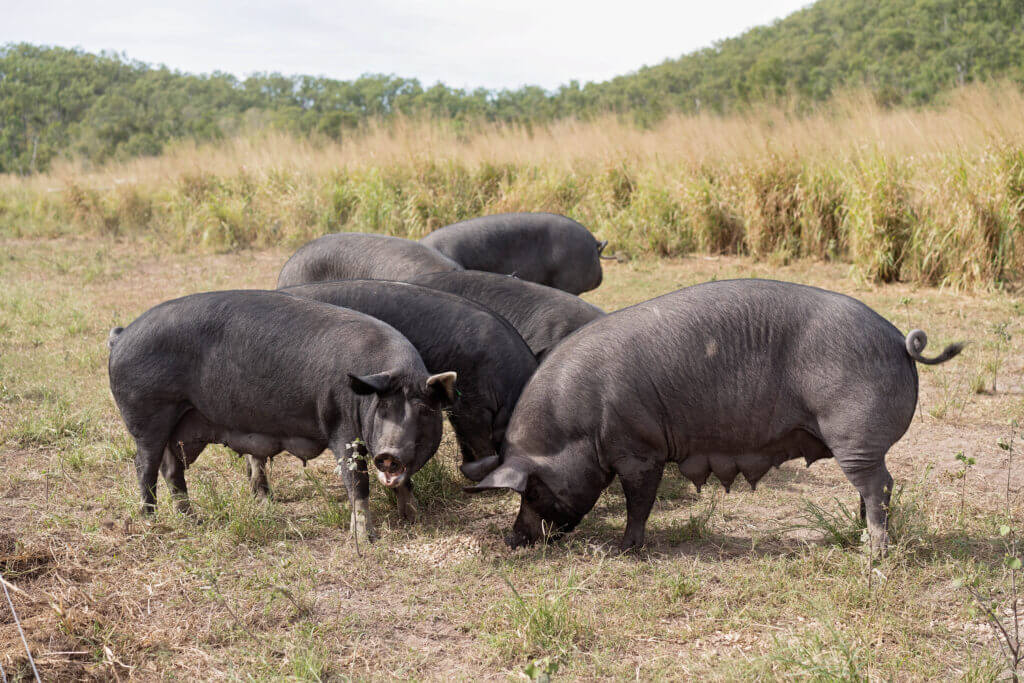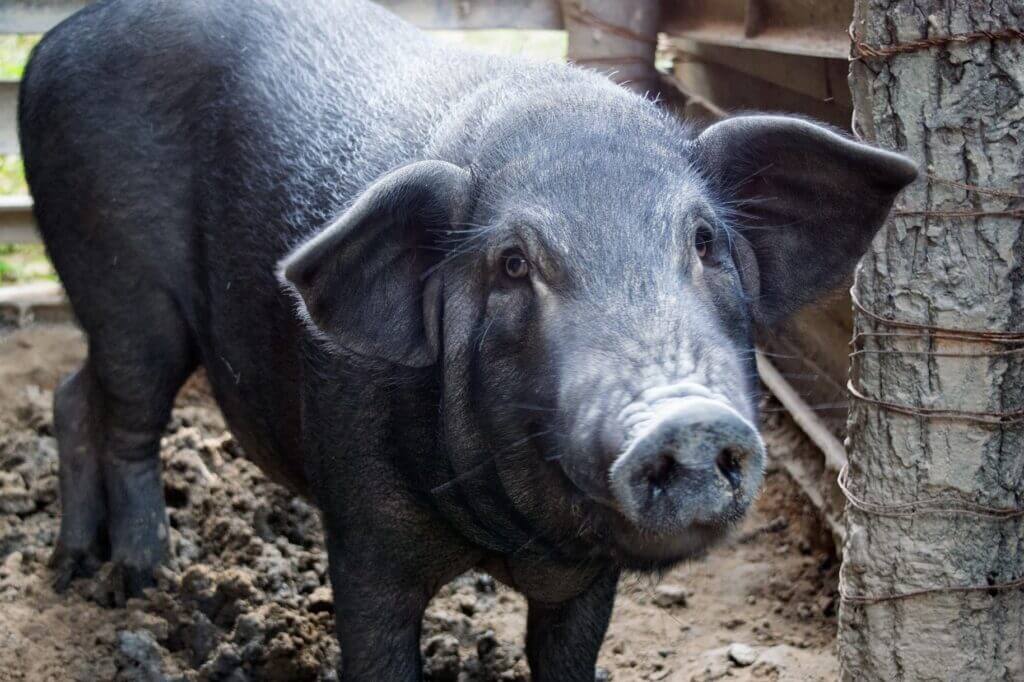
When most people think of pigs, a few features immediately spring to mind: a flat snout, a corkscrew-like tail and a rosy hue. However (and with all due respect to Porky Pig), not all pigs are born pink. Berkshire pigs (also known as “Kurobuta” in Japan) are primarily black with white snouts, feet, & tails that are much-heralded for their distinctive flavor, marbling and tenderness. Often described as having a more intense, “porky” flavor, as well as being sweeter with redder flesh and more intramuscular fat, Berkshire pork’s popularity in Japan and subsequent revival of interest in the United States carries with it some parallels to the increasingly popular Wagyu beef.
Yet the Berkshire pig breed has its origins in England and has had been certified for bloodline purity since 1875 in the U.S. – so what’s behind its resurgence in popularity and association with Japan?
Hog History, Pig Tales
According to popular legend, the Berkshire hog was originally discovered in the 17th-century by soldiers of Oliver Cromwell’s army as they wintered at Reading in the shire of Berks in England. Impressed by the moist and succulent flesh of the rural breed, Cromwell’s soldiers spread far & wide word of the hogs and their unusually delicious flavor.
While this recounting of the pigs’ popularization may indeed be a fanciful tale, we can safely say that Berkshire hogs were introduced to American pastures in the early 19th-century. In 1875, the American Berkshire Association was founded in Springfield, Illinois by a group of breeders & importers of the hogs from across the country. Soon after, the ABA established the world’s first “Swine Registry” to great enthusiasm. Because the breeders wanted to ensure the purity of the breed’s bloodlines, they established the standard that only hogs imported directly from authenticated English herds (or American hogs directly descended from such herds) would be permitted to be registered.
To this day, the American Berkshire Association still awards its “100% Pure Berkshire Pork” designation to “pigs that are offspring of purebred, pedigreed Berkshire sires and dams.” So what makes Berkshire pork so special? Why and how is it so different from the common domesticated pork that’s found in virtually every supermarket in America? In short: intense, rich flavor that can’t be found in the common hog.
What does Berkshire Pork Taste Like?

Brining is a common method of preparation for pork: it ensures tender, moist, and juicy chops that crisp up nicely in a skillet. However, Berkshire pork is noted for not needing to be brined because its naturally high pH allows it retain moisture during cooking, which means that it’s easier to fry or bake a particularly tasty cut of pork.
Given that common, domesticated hogs have been bred in accordance with the consumer preference for lower-fat nutrition over the past 30 years, modern supermarket pork tends to be a lifeless, bright pink color virtually devoid of fat-marbled flesh, and often resembles chicken in both color and flavor. Berkshire pork has taken cooks by surprise with its marbling, deep crimson color, smoky flavor, and intense porkiness. As the pendulum swings away from the extreme low-fat frenzy, shoppers and diners have begun to appreciate the uniqueness of Berkshire pork’s flavor profile, which is said to approximate the taste of common American pork of generations past.
We’ve established that Berkshire pork is exceptionally tasty, but what is “Kurobuta” pork and how is it different from Berskhire?
Kurobuta: the Japanese Branch of the Berkshire Family
At land’s end on Japan’s southerly isle of Kyushu lies Kagoshima prefecture. Thanks to its pleasant weather and good soil, the region is known for its produce: in particular, its sweet potatoes. During the 19th-century, as Japan began steadily began re-opening its borders to foreign merchants and emissaries, Berkshire ham was introduced to the region. To this day, the breed is raised on the local sweet potatoes and is known as the “walking vegetable”. Revered in pork-loving Japan – as it is in the United States and the United Kingdom – for its finely-textured flesh, nutrition and aforementioned intensely porky flavor, the breed is known there as “Kurobuta” (黒豚) which translates literally to “black pig”.
Aside from its provenance and diet of sweet potatoes, “Kurobuta” is merely another name for the Berkshire breed in Japan.
Take the Plunge and Try a Tasty Berkshire Ham Today
The next logical step here is to take a flyer on a whole boneless Berkshire ham and try one today. Smoke-roasted and cured so that you don’t have to worry about prep, Chicago Steak Company’s Berkshire hams are indeed 100% Certified by the American Berkshire Association so that you know that you’re getting the real deal, pedigreed, tender, and moist black hog delivered to your doorstep. They’re rolled, tied, and once defrosted, are ready to be served at room temperature or warmed and make for an impressive centerpiece on any occasion. Try the high-quality heritage pork that’s making a comeback, ASAP!

